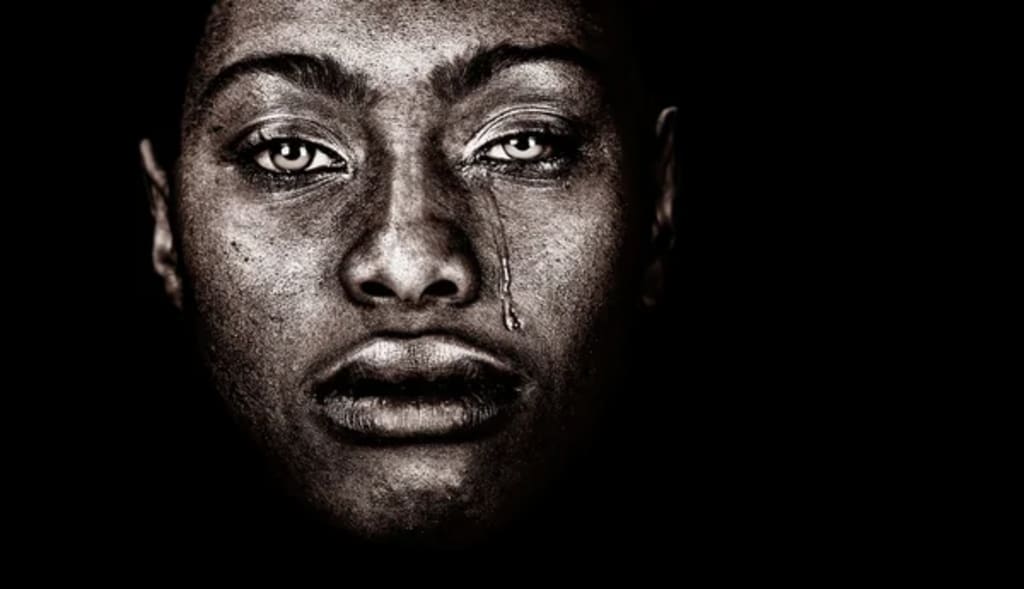Healing the Ancestral Wounds
The Intrinsic Journey of Slave Descendants in Africa

The sun beat down mercilessly on the dusty streets of Obinna's village, casting a golden glow on the worn faces of its inhabitants. Obinna, a man with broad shoulders and a weary gaze, carried the weight of generations on his shoulders. He was a descendant of slaves, and the wounds of his ancestors ran deep within him. His own family, consisting of his wife, Nneka, and their two children, Ada and Chidi, had suffered dearly under the burden of their shared history. But Obinna, driven by a resolute spirit, embarked on an intrinsic journey to heal the ancestral wounds that had plagued their lives.
As the family gathered beneath the mango tree, the shade offered a fleeting respite from the scorching heat. Obinna's voice trembled as he recounted stories passed down through the generations—stories of pain, resilience, and hope. With each tale, he sought to piece together the fragments of their collective history, hoping to find a path to healing.
Obinna's grandparents had been captured by slave traders, ripped from their homes and families. They were forced onto cramped ships and transported across the vast Atlantic, enduring unimaginable suffering and loss. The family's ancestral wounds ran deep, etching themselves into the very fabric of their existence.
As the years went by, Obinna witnessed the insidious legacy of slavery manifesting in his own life. Discrimination, economic disparity, and a sense of displacement were constant companions, casting shadows over their dreams and aspirations. It seemed as though the chains of the past were unbreakable.
But Obinna refused to succumb to despair. He embarked on a journey of self-discovery, seeking to understand the intricacies of his heritage and to reclaim the resilience that had been stolen from his ancestors. He traveled to the places his forebears had called home, tracing their steps and immersing himself in their stories.
With each revelation, Obinna found solace in connecting with other descendants of slaves, individuals who carried the same ancestral wounds as he did. Together, they formed a support network, sharing their pain, fears, and dreams. In their collective healing, they discovered the power of community, a source of strength that had been denied to their ancestors.
Back in his village, Obinna initiated dialogues that encouraged open discussions about the legacy of slavery. He organized workshops and gatherings, inviting scholars, artists, and community leaders to explore the complex nuances of their shared history. Through storytelling, art, and music, the villagers began to heal the wounds that had festered for generations.
Obinna also recognized the importance of education in breaking the cycle of oppression. He established a school in the village, where children could learn about their history and embrace their cultural heritage. By empowering the younger generation with knowledge and self-worth, he hoped to equip them with the tools needed to dismantle the systemic barriers that perpetuated their suffering.
As time passed, the village transformed into a vibrant hub of resilience and hope. The wounds that once defined its inhabitants became catalysts for change, propelling the community toward a future of unity and prosperity. Obinna's family, once burdened by the weight of ancestral suffering, now stood tall, their spirits unbreakable.
Through their intrinsic journey of healing, Obinna, Nneka, Ada, and Chidi learned to honor their ancestors' pain while forging their own path. The ancestral wounds that had once divided them now united them in a shared purpose—to create a better world for themselves and future generations.
Obinna understood that the healing process was ongoing, that the wounds of the past would never fully disappear. But armed with resilience, love, and a deep-rooted sense of identity, he was determined to rewrite the narrative for his family and all descendants of slaves in Africa.
As the sun set on the village, casting hues of orange and purple across the horizon, Obinna looked out at the faces of his community. He saw strength and hope reflected in their eyes—testaments to the intrinsic journey they had embarked upon together. And in that moment, he knew that healing was not just a personal endeavor, but a collective triumph, an affirmation of their shared humanity.
And as the village moved forward, guided by the light of their ancestral wisdom, the wounds of the past slowly transformed into a tapestry of resilience, creating a future where their descendants would thrive and reclaim their rightful place in the rich tapestry of African history.
About the Creator
JAY ANTHONY
Am an African, Nigeria Precisely, an extraordinary man roamed with a spirit of boundless enthusiasm.
basically my stories would bother round African-America life style.






Comments
There are no comments for this story
Be the first to respond and start the conversation.